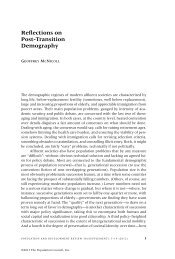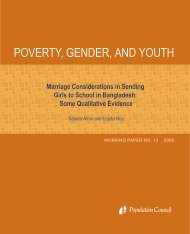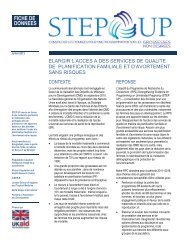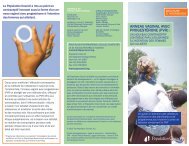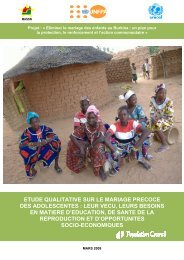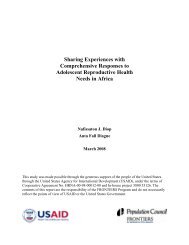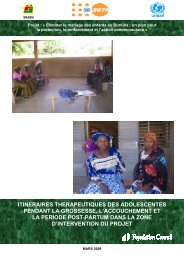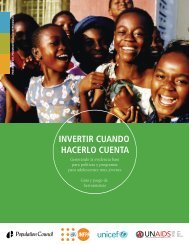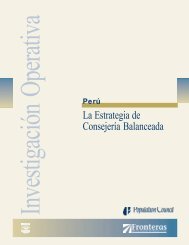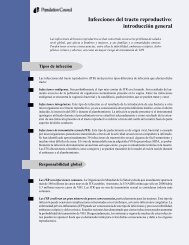Community Health Volunteer's Training Manual - Population Council
Community Health Volunteer's Training Manual - Population Council
Community Health Volunteer's Training Manual - Population Council
Create successful ePaper yourself
Turn your PDF publications into a flip-book with our unique Google optimized e-Paper software.
<strong>Community</strong> Mobilisation and Participation<br />
it successful. We can therefore define community mobilisation as ‘the joining together<br />
of strengths of community members and other people into an action plan which is<br />
implemented to address and solve community problems’.<br />
Box 2.3.1: Other definitions of community mobilisation<br />
1.<br />
2.<br />
<strong>Community</strong> mobilisation is the process of preparing and organising to take action towards<br />
the community’s development.<br />
<strong>Community</strong> participation is a process whereby individuals, groups as well as the entire<br />
community take responsibility for their health and well being. They then decide to be<br />
involved and contribute to finding solutions to their own community problems.<br />
If we believe in the saying that “<strong>Community</strong> is strength”, then it is important that<br />
communities participate fully in managing their health problems. This is called community<br />
participation. As a volunteer, your understanding of community mobilisation and<br />
participation empowers you to effectively mobilise the people in your community for health<br />
and development issues. Exercise 2.3.1 will help you understand the process involved in<br />
community mobilisation.<br />
Exercise 2.3.1<br />
Objective<br />
1. To understand the process of<br />
community mobilisation and<br />
participation<br />
2. To learn about how it is done<br />
Time: 30 Minutes<br />
Questions<br />
1. Who did you mobilise?<br />
2. Why did you mobilise the entire<br />
community?<br />
3. How did you get all the people to<br />
participate<br />
4. What resources did you use?<br />
5. What lessons did you learn from the<br />
experience?<br />
Purpose of <strong>Community</strong> Mobilisation<br />
Instruction to the Facilitator<br />
1. Put participants in three<br />
groups. Let each group write<br />
an outline of how to mobilise<br />
their community for different<br />
projects and get people to<br />
participate. The project can be<br />
– <strong>Community</strong> toilet, Borehole,<br />
CHC or Road works.<br />
2. In plenary presentations, ask<br />
participants to share their<br />
experiences on how the<br />
communities were mobilised for<br />
specific projects.<br />
Use the questions in Exercise 2.3.1<br />
as a guide.<br />
On what occasions do you mobilise your communities? Funerals, out-doorings, marriages,<br />
confirmations, or engagements? We mobilise communities for both happy and sad<br />
occasions. You as VHCs and CHVs mobilise communities for various activities especially in<br />
health development. Therefore, you need to be familiar with the purpose, benefits and the<br />
challenges of community mobilisation to help you mobilise your people to work with you.<br />
Why did you become a village health volunteer? For recognition? To learn about diseases?<br />
For everything we do, there is a reason or a purpose that guides why we do it. It is the same<br />
115



